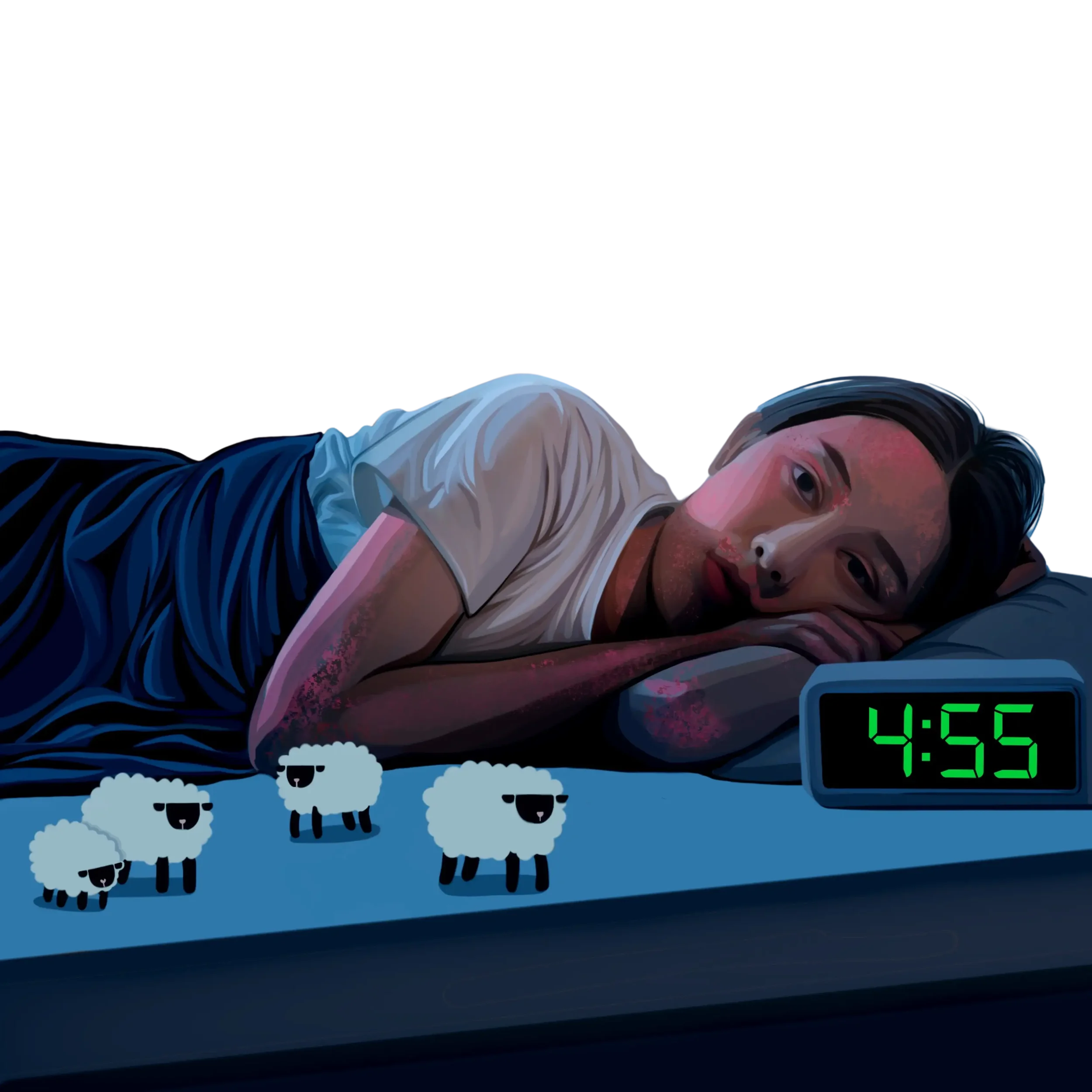Internal Triggers of TSW
Stress, Sleep, Hormones, and Diet
Understanding your body is the first step to supporting fragile, sensitive skin.
For patients experiencing Topical Steroid Withdrawal (TSW)* or Red Skin Syndrome (RSS)*, internal factors can play a huge role in triggering flares. While CAP treatment accelerates healing at our TSW Clinic, learning how your body affects your skin can help you minimise flare-ups and regain control over your recovery.
What Are Internal Triggers?
Internal triggers are those that cause your skin to flare from within, usually caused by hormonal, immune or digestive responses. Below we have listed and explained common examples that have been often witnessed amongst TSW* / RSS* patients.
Common internal triggers include:
Stress
Lack of Sleep
Hormonal Fluctuations (Menstrual Cycle)
Physical Illness
Alcohol
Food Reactions (Allergic, Fermented, or Spicy)
Stress
Stress is a significant contributor to Topical Steroid Withdrawal (TSW) / Red Skin Syndrome flare-ups. When stressed, the body releases cortisol, a hormone that can worsen inflammation. Managing stress through mindfulness, relaxation techniques, or seeking professional help can significantly reduce stress related TSW* / RSS* flares.
Tips to manage stress:
Try mindfulness or meditation daily.
Practice deep breathing or gentle yoga.
Seek professional support if stress feels overwhelming.
Engage in relaxing activities like walking by the sea or listening to calming music.
Even small, consistent steps can significantly reduce flare-ups caused by stress.
Lack of Sleep
Sleep is essential for overall health and skin regeneration. During sleep, the body repairs and rejuvenates tissues, including the skin. Disrupted sleep patterns can disrupt this process, leading to prolonged healing times. Establishing a regular sleep schedule and creating a conducive sleep environment can promote better sleep quality. We understand that this can be difficult when you’re itchy and in pain so begin by aiming to complete at least 2 hours sleep cycles a few times a night or even in the day.
Tips for better sleep:
Establish a regular sleep schedule.
Create a sleep-friendly environment: dark, quiet, and cool.
If itching interrupts your night, try short sleep cycles or daytime rest.
Gentle compression, soft blankets, or a cold compress can help soothe discomfort for better rest.
Even a few hours of quality sleep each night helps your skin recover faster.
Hormones & the Menstrual Cycle
It is common to notice skin flares a week before and / or during menstruation. Some may even experience skin flares around ovulation. These changes are primarily driven by hormonal fluctuations. Tracking your cycle can help give you visibility on flare cycles and enable you to prepare for menstrual and ovulatory phases.
Tips for managing hormonal flares:
Track your cycle to predict flare-prone days.
Schedule extra self-care during sensitive phases.
Prioritize hydration, nutrition, and gentle skincare during these times.
Awareness allows you to prepare and care for your skin proactively.
Physical Illness
Physical illnesses, such as the flu or a cold, can also trigger flare-ups for patients with TSW* / RSS*. To support your skin, it’s important to maintain good nutrition and prioritise overall well-being to help prevent illness and minimise flare-ups. (Interestingly, some patients notice an improvement in their skin during times of physical illness due to the additional rest and sleep, so if you do get ill, take time to rest!)
Tips to support healing during illness:
Prioritize rest and hydration.
Maintain balanced nutrition to support immune function.
Some patients notice temporary improvement during illness due to extra rest. Take advantage of this by allowing your body time to heal.
Food Reactions
Certain foods may trigger internal flares, especially in sensitive individuals:
Allergic Food
Patients should avoid foods they are allergic to, as well as foods that may be cross-contaminated with their known allergens. Even small traces of an allergen can accumulate over time that triggers an immune response and potentially trigger skin-flares. Always check food labels carefully and be cautious when eating out to help reduce the risk of accidental exposure.
Fermented Food
Some patients with TSW / RSS report skin flare-ups after consuming certain fermented foods (such as kimchi, sauerkraut, and tempeh). This may be due to their high histamine content, which can trigger or worsen inflammation in sensitive individuals. Interestingly, many patients find that yogurt or kombucha do not cause the same reaction. As with many aspects of TSW / RSS, every individual is different so it’s helpful to monitor your skin’s response and identify what works best for your body.
Spicy Food
Many patients with TSW / RSS notice skin flare-ups after eating spicy foods. Spices can increase blood circulation, body temperature and trigger histamine release in some individuals which may worsen redness, itching, or inflammation. However, not everyone reacts the same way and some patients tolerate mild spices without issue. As always, it’s helpful to pay attention to your body’s signals and adjust your diet based on how your skin responds.
Alcohol
Many patients with TSW* / RSS* notice skin flare-ups after consuming alcohol. This may be due to several factors, including alcohol’s dehydrating effect, its ability to trigger histamine release, and its potential to increase inflammation in the body. Since everyone reacts differently, it’s important to observe how your skin responds and consider limiting alcohol if you notice a connection between alcohol drinking and flare activity.
Wave Skin Wellness Tips:
Keep a food diary to track flare patterns.
Test changes slowly, not all patients react the same way.
Focus on gentle, nourishing meals.
Monitor your skin after drinking.
Limit alcohol if you notice flare-ups.
Opt for hydrating alternatives whenever possible.
Putting It All Together
Internal triggers are highly individual. By tracking stress, sleep, hormones, illness, alcohol, and diet, you can empower yourself to prevent flares and support your skin’s recovery.
CAP treatment accelerates healing, but understanding your body is the key to long-term skin wellness.
Next Steps:
Start a daily internal trigger journal to track flare patterns.
Combine lifestyle adjustments with CAP treatment for accelerating smoother recovery.
Read our blogs External Triggers and Physical Triggers for a complete healing strategy.
*TSW (Topical Steroid Withdrawal) refers to redness, burning, irritation, skin thinning or other adverse effects of topical steroid use. It can also be known as Red Skin Syndrome, Topical Steroid Addiction and Topical Steroid Damage.


